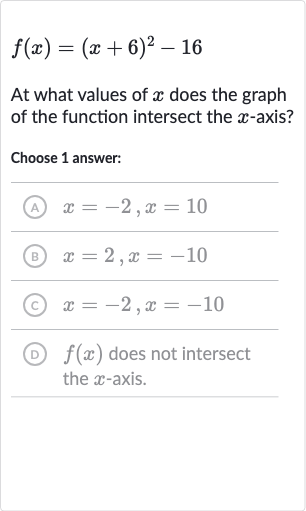Full solution
Q. At what values of does the graph of the function intersect the -axis?Choose answer:(A) (B) (C) (D) does not intersect the -axis.
- Set to zero: To find the -intercepts of the graph of the function, we need to set to zero and solve for .
- Solve for x: Now we solve the equation . Add to both sides to isolate the squared term.
- Isolate squared term: Take the square root of both sides to solve for .
- Take square root: Now we solve for by subtracting from both sides of each equation. and and
More problems from Compare linear and exponential growth
QuestionGet tutor help
QuestionGet tutor help
QuestionGet tutor help
QuestionGet tutor help
QuestionGet tutor help
QuestionGet tutor help
QuestionGet tutor help

